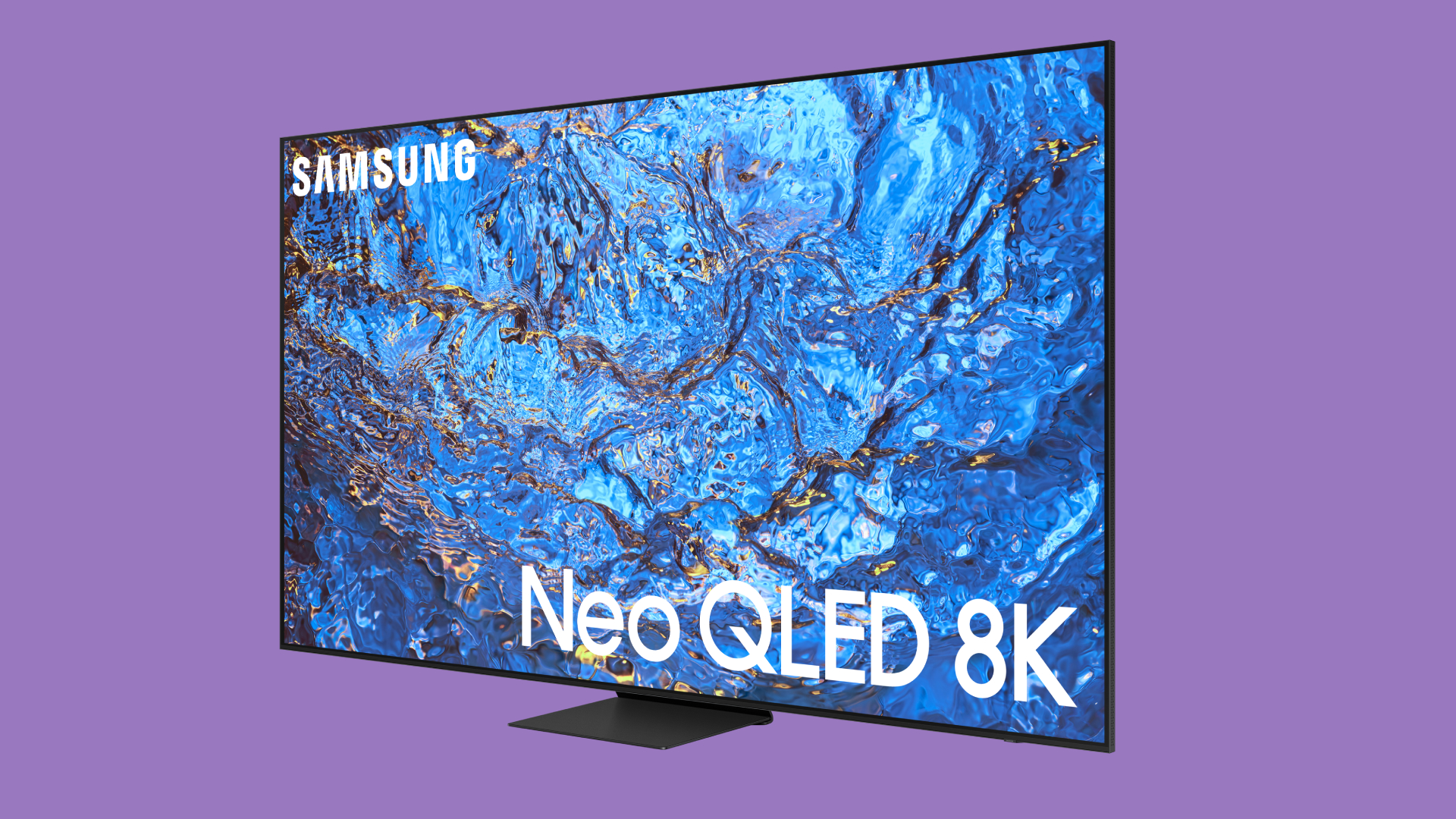Samsung’s new 98-inch 8K mini-LED makes 8K TVs finally make sense
When it comes to 8K, it's go big or go home

Samsung has launched its flagship QN990C Neo QLED TV in the US, and at 98 inches, it’s the largest 8K TV the company has ever produced.
At $40,000, the new TV is priced well above other 98-inch TVs on the market from the likes of TCL that use a mini-LED backlight, and it costs five times as much as Samsung’s own 98-inch Q80C QLED model.
Aside from its size, the big draw here is the TV’s 8K resolution Neo QLED display panel. The best 8K TVs from Samsung previously topped out at 85 inches, a size that, in the rapidly expanding world of big-screen sets, is starting to seem on the small side. To put that statement into context, the company will be showing the QN990C at this week’s 2023 CEDIA Expo alongside its The Wall All-In-One, a 4K MicroLED display that’s available pre-assembled in 146- and 110-inch screen sizes.
The new QN990C uses the company’s Neural Quantum Processor to upscale 4K and HD images to 8K using “AI-based formulas.” It also has an 8K AI depth enhancer that boosts highlights in areas of images with a strong visual focus, a process that I found to be effective when I conducted a hands-on test of the Samsung QN900C, another 8K model.
Other picture quality enhancements found on the new QN990C include an anti-glare screen for viewing in high ambient room lighting conditions, and Samsung’s Ultra Viewing Angle technology, which allows for pictures to look uniformly bright from both on-axis and off-center seats. The TV’s four HDMI 2.1 ports support a 4K 120Hz input from next-gen gaming consoles, and it also has Samsung Gaming Hub for playing cloud-based games from Xbox, Nvidia GeForce Now, Amazon Luna, and more.
With a 360-degree all-metal design and an included stand, Samsung clearly wants the QN990C to look good from all angles, though the “impossibly slim profile” set also comes with a slim-fit wall mount. Audio, too, gets consideration on the new TV, with a built-in 6.4.4 Dolby Atmos speaker system and a Cinema Object Tracking Sound to enhance the presence of sound effects in movies.
Opinion: 8K TVs need to be enormous to make sense
8K TVs haven’t really made a dent in the TV market for two key reasons. The first is that there isn’t much in the way of 8K content to fill an 8K TV’s ultra-high resolution screen aside from clips streamed from YouTube. The second, and more compelling reason, is that 4K TVs already look fantastically detailed, even when you’re viewing with a set that has an ultra-large screen.
Get daily insight, inspiration and deals in your inbox
Sign up for breaking news, reviews, opinion, top tech deals, and more.
Despite the market challenges 8K TVs face, Samsung has pushed forward with the technology, releasing new 8K models year after year. The hands-on QN900C test I conducted earlier in 2023 was the first time I had spent quality time with an 8K TV, and I ended up being very impressed with the improvement in detail Samsung’s Neural Quantum Processor brought to 4K sources. My earlier experiences seeing video upscaling using “AI-based formulas” had been somewhat off-putting, but Samsung had clearly developed its processing to the point where it wasn’t just transparent to the video source, but could actually improve upon it.
Of course, anyone who ends up spending $40,000 on an 8K TV will expect to one day use it to view actual 8K programs, and I’m fairly certain there will be more of that available on streaming services in the future. But to fully appreciate the extremely high resolution that 8K provides, and to do so from a reasonable viewing distance, you’ll need an ultra-large TV, and that’s where Samsung’s new 98-inch QN990C starts to make sense.
Will Samsung end up selling many of its new 98-inch 8K TVs? I can’t help but think that prospect is unlikely given the current high price. But compared with the company’s 110- and 148-inch MicroLEDs that are also on display at this year’s CEDIA Expo, which are so costly that a price isn’t even provided on the Samsung website, the 98-inch QN990C comes across as a relative bargain.
You might also like

Al Griffin has been writing about and reviewing A/V tech since the days LaserDiscs roamed the earth, and was previously the editor of Sound & Vision magazine.
When not reviewing the latest and greatest gear or watching movies at home, he can usually be found out and about on a bike.